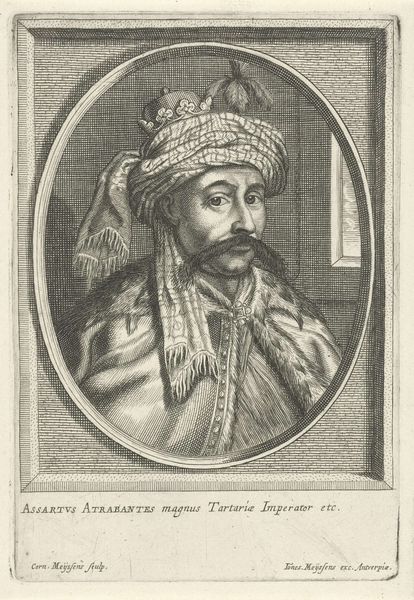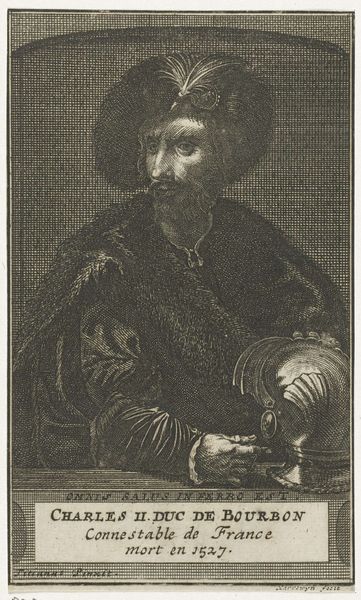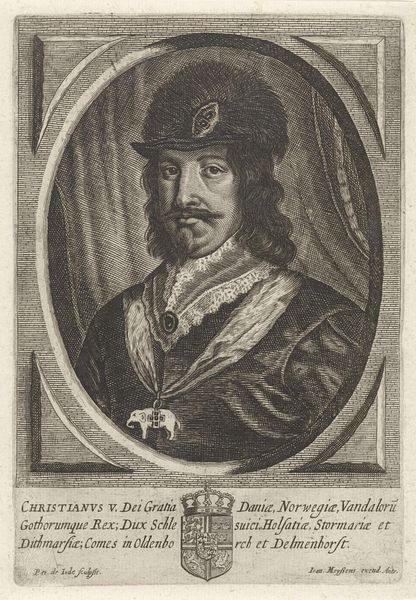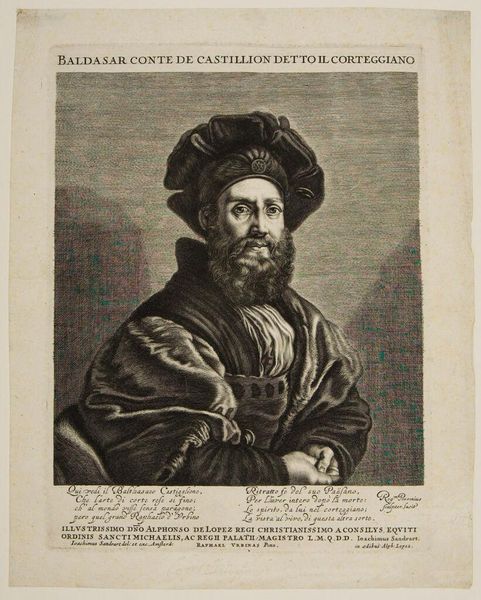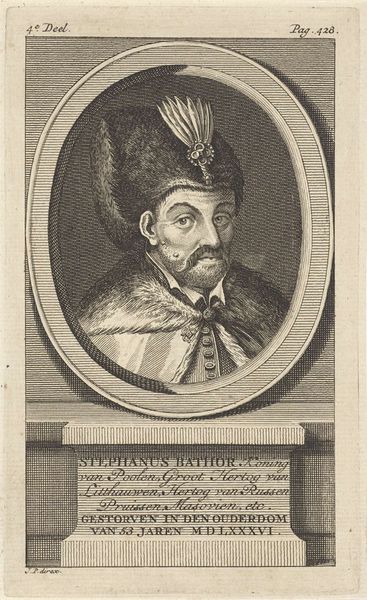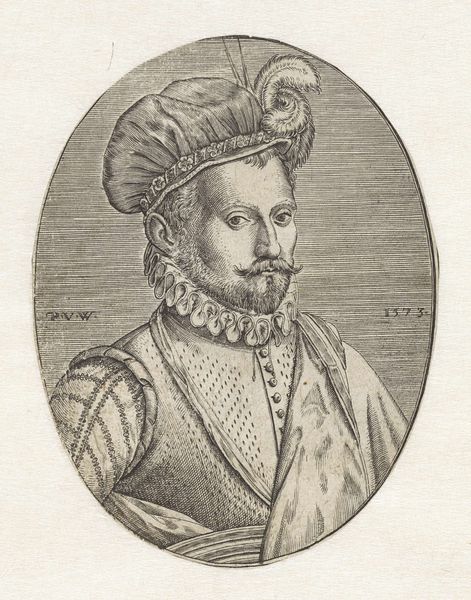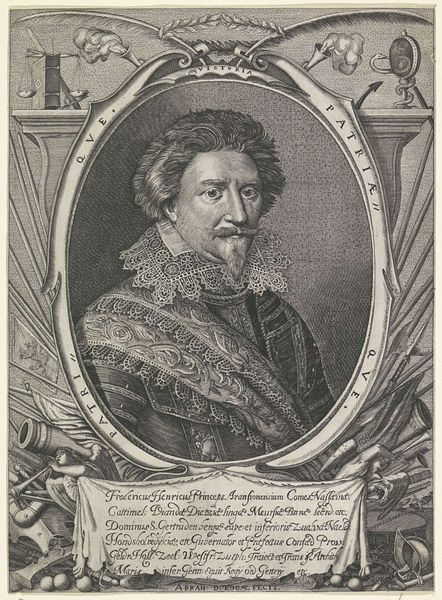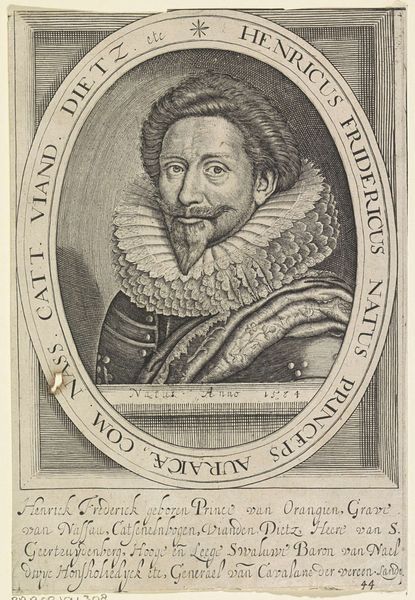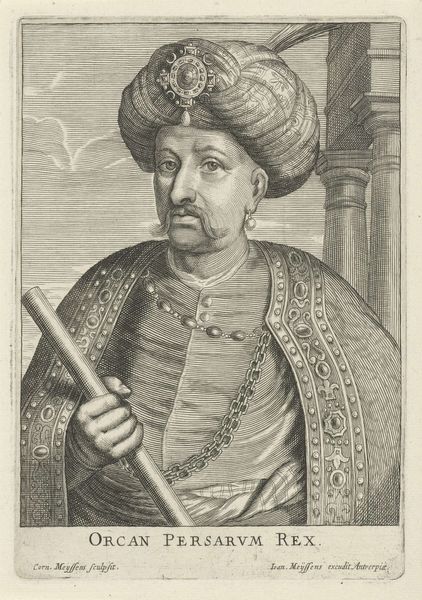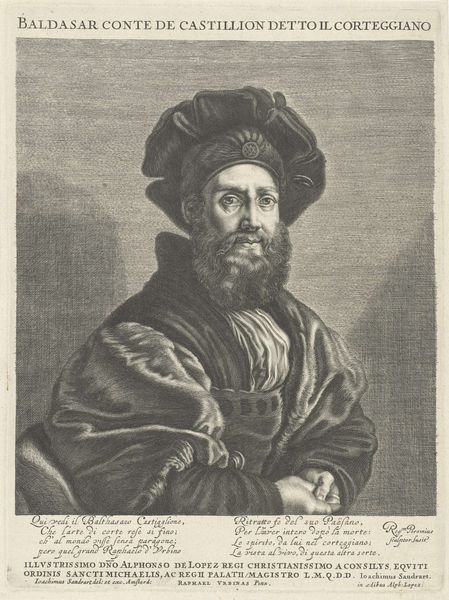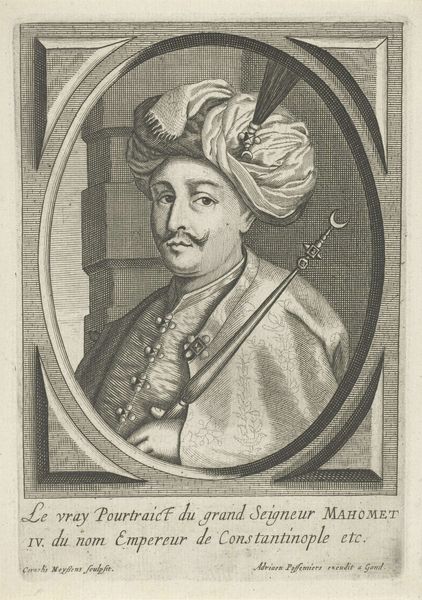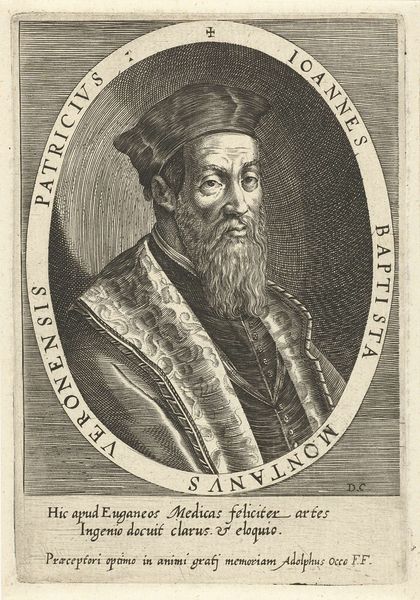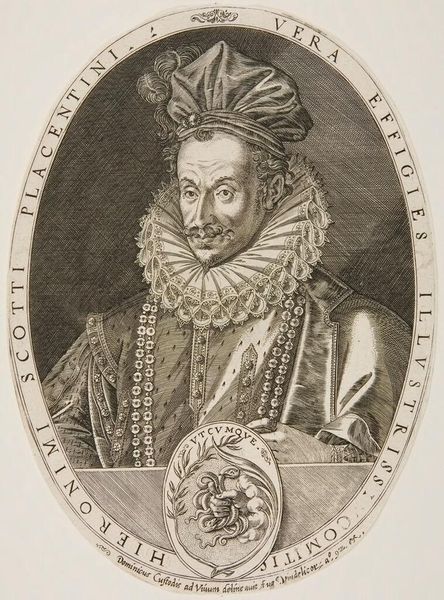
engraving
#
portrait
#
baroque
#
history-painting
#
engraving
Dimensions: height 240 mm, width 180 mm
Copyright: Rijks Museum: Open Domain
Editor: So, here we have an engraving from somewhere between 1665 and 1698, entitled "Portret van Ottomaanse graaf Alberto Caprara met bontmuts," or, "Portrait of Ottoman Count Alberto Caprara with fur hat," by Jacques Blondeau. It's striking how the oval frame emphasizes the Count's face and imposing fur hat. What initially stands out to you? Curator: I am struck by the sophisticated deployment of line. The artist achieves a remarkable range of textures and tones, purely through varying the density and direction of the engraved lines. Note, for instance, the stark contrast between the smooth, almost planar surface of the face, achieved through fine, parallel lines, and the chaotic, radiating lines used to depict the voluminous fur hat. Editor: The contrast you highlight is indeed masterful. Do you see any evidence of symbolic meaning, beyond just representation? Curator: Observe how the artist frames Caprara within the oval, directing the viewer's gaze to the interplay between his resolute gaze and the textural richness surrounding it. Semiotically, the hat signifies status and possibly allegiance given the work’s historical context – does it not invite contemplation of power, diplomacy, and perhaps even the complexities of cultural identity during that era? Editor: That makes me reconsider my initial view, seeing it less as a mere portrait and more as a carefully constructed statement. It's amazing to consider how much visual information an artist can convey through such relatively simple means! Curator: Precisely, an attentive study to the structure of an artwork is key.
Comments
No comments
Be the first to comment and join the conversation on the ultimate creative platform.
